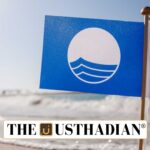Study Findings Reveal a Toxic Reality
Heavy Metal Pollution in Punjab: Rising Health Crisis Along Ghaggar River Drains: A joint research effort by Punjabi University and Thapar University, with support from the Indian Council for Medical Research (ICMR), uncovered severe heavy metal contamination in the Ghaggar River’s wastewater drains. Conducted between October 2017 and July 2018, the study linked elevated pollution exposure to rising cancer cases, especially near Sirhind Choe, Badi Nadi, and Dhakanshu Drain.
High Concentrations of Toxic Metals
Excessive levels of cadmium, lead, and nickel—all listed as toxic and carcinogenic—were found in the water samples. Their concentration exceeded CPCB safety limits, particularly during the monsoon season. The pollution was attributed to agricultural runoff and the unregulated discharge of untreated municipal and industrial waste.
Health Risks and Carcinogenic Impact
As per WHO, cadmium, lead, and nickel are classified as human carcinogens. The study noted that hazard index values for lead were above 1, indicating serious non-carcinogenic risks. Exposure through drinking, cooking, and household chores raises the chances of organ failure and cancer, especially over long periods.
Children and Vulnerable Populations at Risk
Children emerged as the most affected group due to their higher absorption rates of metals. Carcinogenic risk levels for all three metals crossed safe thresholds established by US health agencies, highlighting the urgent need for protective measures for rural and semi-urban populations near the contaminated sites.
Environmental and Groundwater Degradation
The unchecked pollution is also degrading groundwater quality and ecosystem balance. A lack of regular monitoring and poor implementation of environmental laws has worsened the crisis. Continued neglect could lead to irreversible environmental harm and a widespread health emergency.
Policy and Regulatory Action Needed
The study urges immediate policy action including seasonal heavy metal monitoring, strict enforcement of discharge laws, and awareness campaigns. Building water treatment facilities and real-time pollution tracking systems is critical to prevent further contamination and ensure long-term sustainability.
STATIC GK SNAPSHOT
Heavy Metal Pollution in Punjab: Rising Health Crisis Along Ghaggar River Drains:
| Feature | Details |
| Study Conducted By | Punjabi University & Thapar University |
| Supported By | Indian Council for Medical Research (ICMR) |
| Study Period | October 2017 – July 2018 |
| Focus Area | Drains of Ghaggar River, Punjab |
| Major Contaminants | Cadmium, Lead, Nickel |
| WHO Classification | All three are human carcinogens |
| High Risk Areas | Sirhind Choe, Badi Nadi, Dhakanshu Drain |
| Vulnerable Group | Children |
| Recommended Action | Better water quality monitoring, stricter discharge norms |








